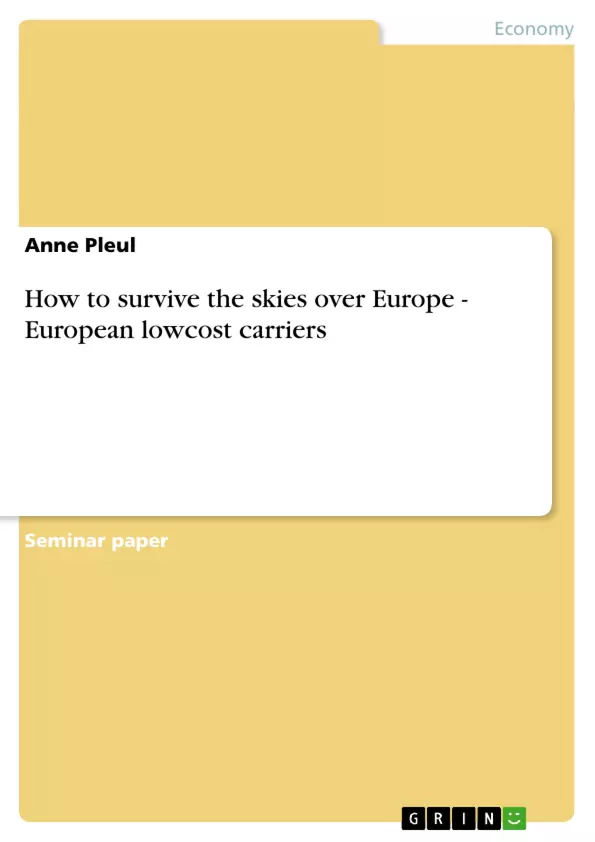[...] Only due to their rapid success, growth of European aviation is back on the level it was before 9/11. Nevertheless, airline managers are starting to realize that the time of endless growth and success is slowing down or, in the worst case, coming to an end. This for example, has caused easyJet, one of Europe’s largest low-cost carriers, to launch a long-term management programme. The aim is to realize its strength and weakness by scrutinizing the market and to position the airline in a way that substantial long-term growth is still possible. Especially as market consolidation is already taking place and competition is increasingly fierce: The outlook is that the market will be dominated by just two or three low-cost carriers within Europe and some full-service airlines operating world-wide networks.
Strategies must be determined now to find the best market, the right network and competitive costs.
This essay will firstly look at commercial aviation in Europe. Following that will be an analysis of the leading carriers and their business strategies.
Inhaltsverzeichnis (Table of Contents)
- 1 INTRODUCTION
- 2 ANALYSIS OF COMMERCIAL AVIATION IN THE EUROPEAN UNION
- 2.1 MAIN MARKETS
- 2.2 MARKET CONSOLIDATION
- 2.3 LEGAL REQUIREMENTS
- 2.4 LEADING MARKET PLAYERS
- 2.5 ANALYSIS OF MARKET PLAYERS
- 3 STRATEGIES TO BE A SUCCESSFUL LCC
- 3.1 THE IDEA
- 3.2 PRICING
- 3.3 COST STRUCTURE
- 3.4 NETWORKS AND SCHEDULES
- 3.5 AIRCRAFT FLEET
- 4 CLOSING REMARKS
Zielsetzung und Themenschwerpunkte (Objectives and Key Themes)
The purpose of this essay is to analyze the commercial aviation industry in Europe, focusing on the rise of low-cost carriers (LCCs) and the strategies they employ to achieve success. It aims to shed light on the key factors driving this market shift and explore the implications for both traditional and emerging players.
- Growth and evolution of commercial aviation in Europe
- The emergence and rapid growth of low-cost carriers (LCCs)
- Market dynamics and competitive landscape in the European aviation industry
- Strategies adopted by LCCs for success, including pricing, cost structure, and network optimization
- The impact of LCCs on the overall industry and the future outlook of European aviation
Zusammenfassung der Kapitel (Chapter Summaries)
- Introduction: This chapter introduces the concept of change in the European aviation industry and highlights the rapid rise of low-cost carriers (LCCs) in recent years. It discusses the dramatic shift in ticket pricing and the impact of LCCs on job creation and overall growth.
- Analysis of Commercial Aviation in the European Union: This chapter provides an overview of the European aviation market, highlighting the growth of passenger numbers and the increasing share of LCCs. It analyzes the main markets, consolidation trends, legal requirements, and leading market players.
- Strategies to Be a Successful LCC: This chapter delves into the strategies employed by successful low-cost carriers. It examines their business models, including pricing strategies, cost optimization measures, network management, and aircraft fleet selection.
Schlüsselwörter (Keywords)
The essay focuses on the following key topics: commercial aviation, European Union, low-cost carriers (LCCs), market dynamics, competition, business strategies, pricing, cost structure, network management, aircraft fleet, growth, and market share.
- Quote paper
- Anne Pleul (Author), 2005, How to survive the skies over Europe - European lowcost carriers, Munich, GRIN Verlag, https://www.grin.com/document/89308



